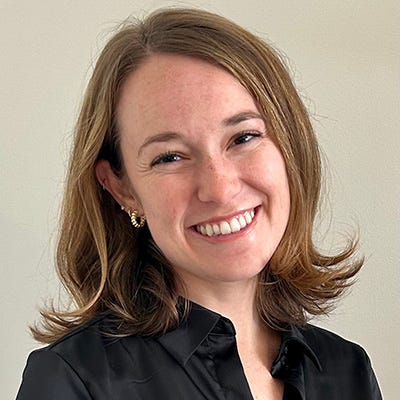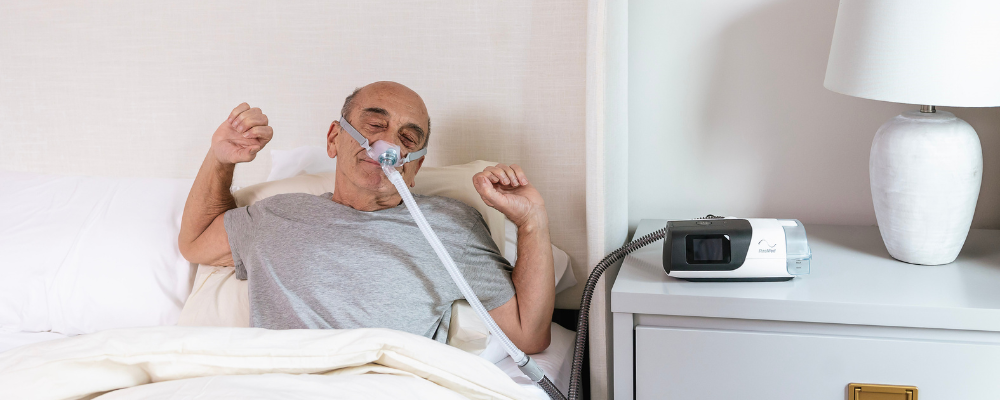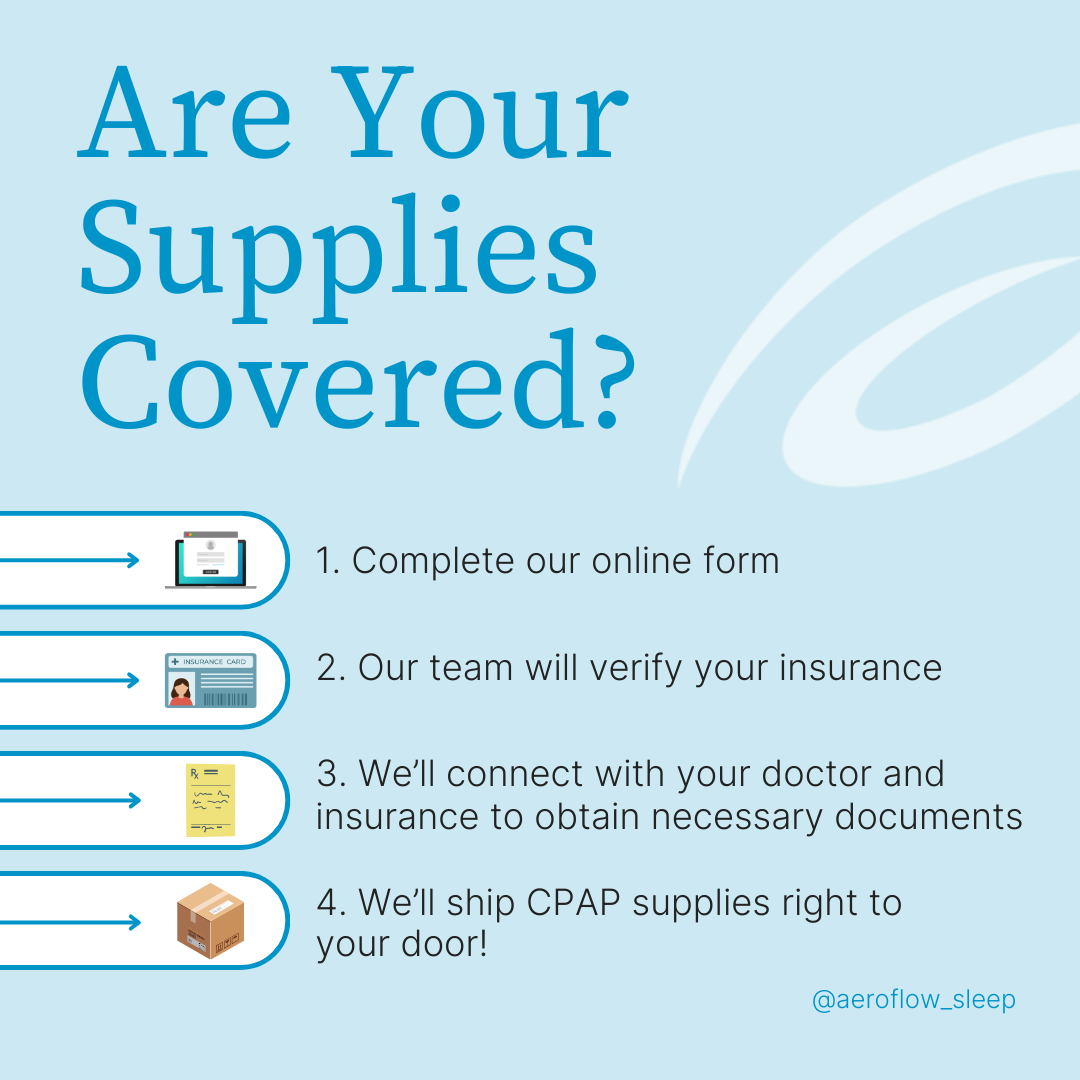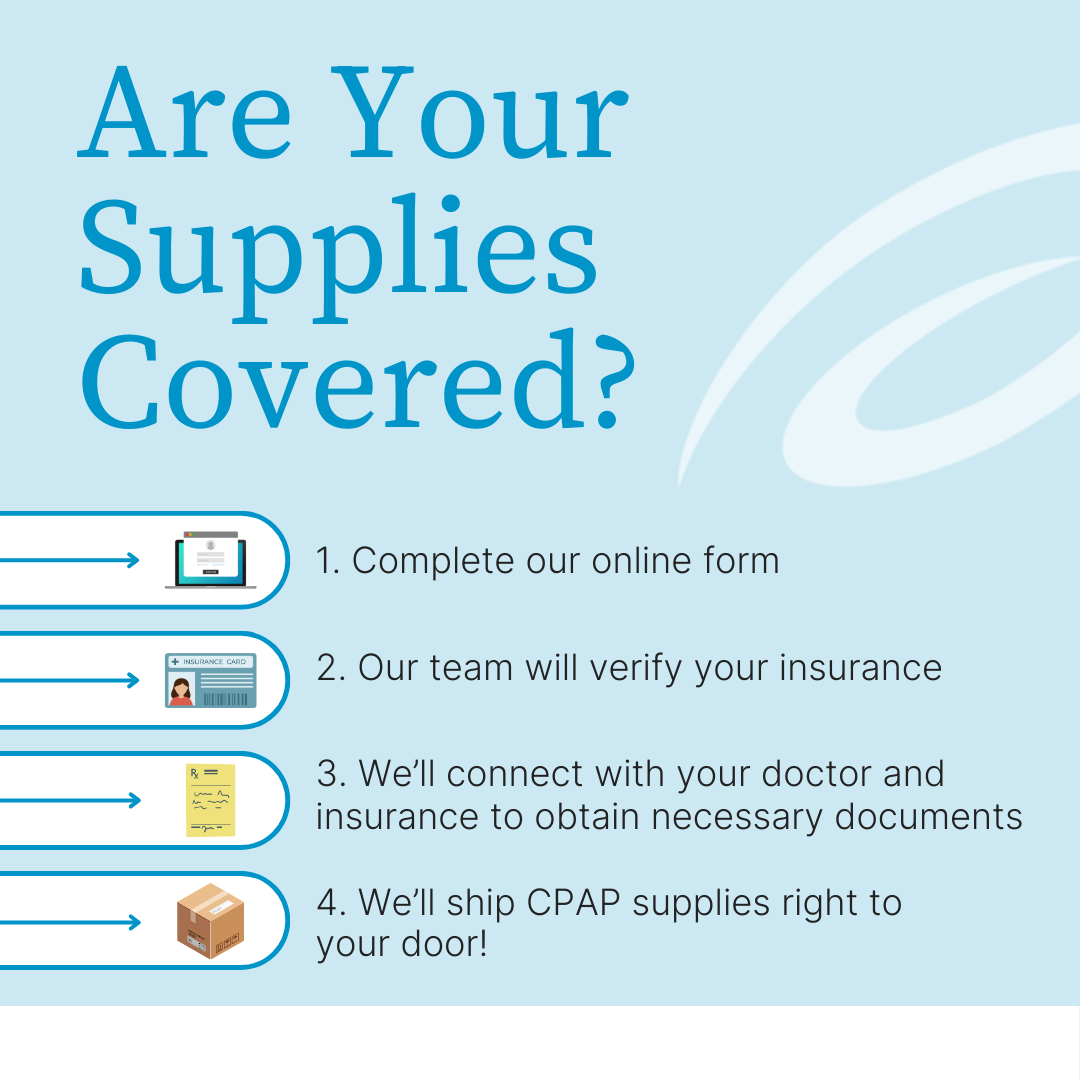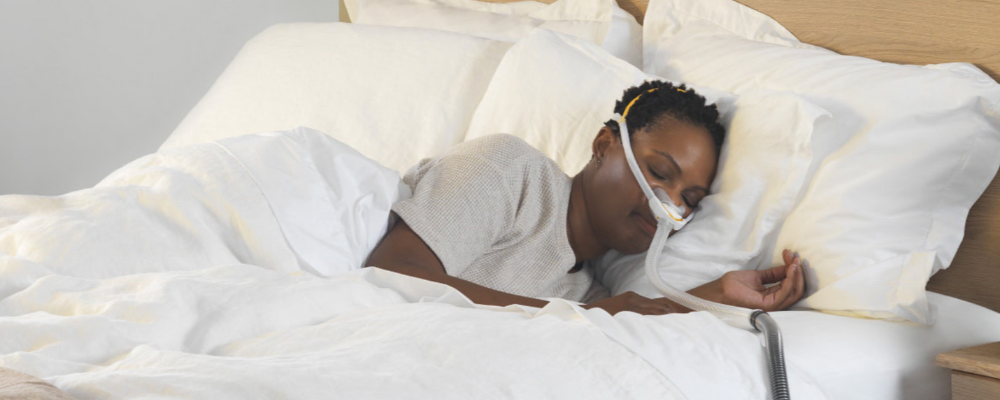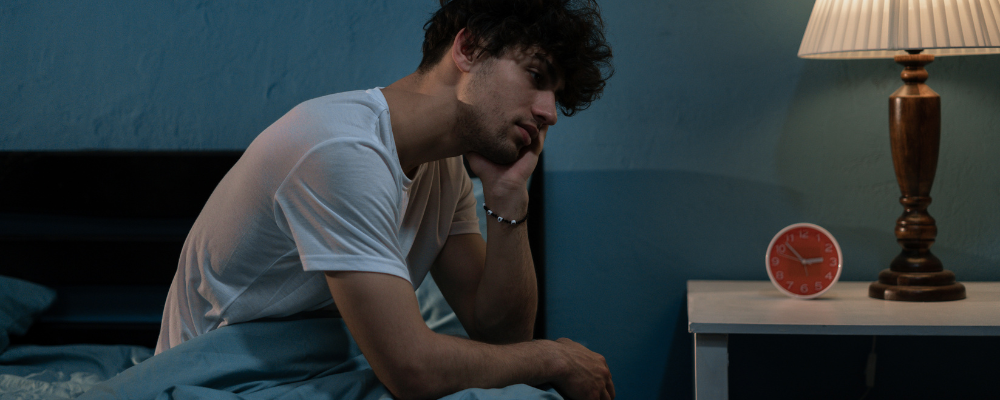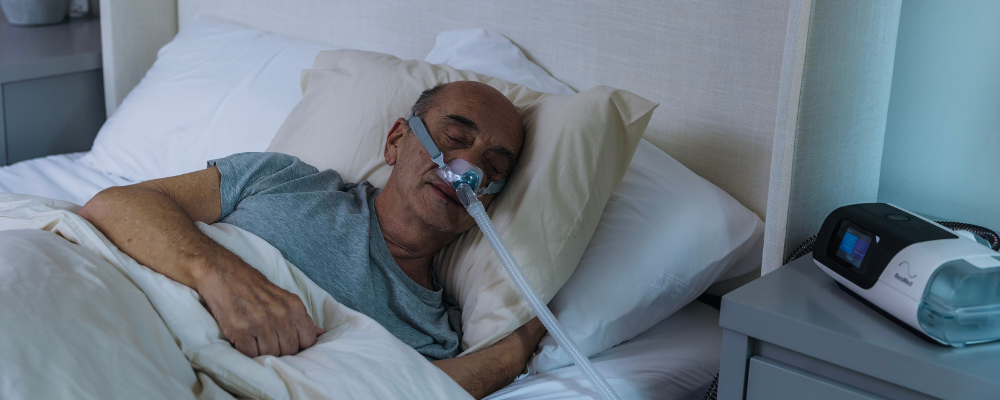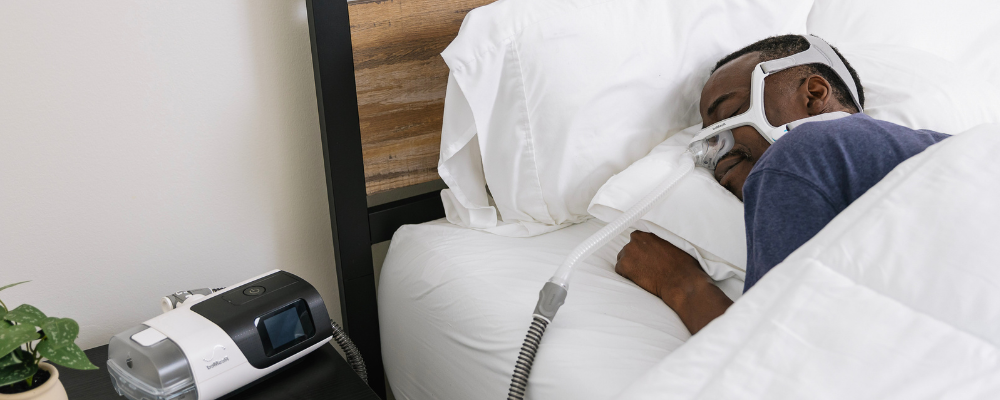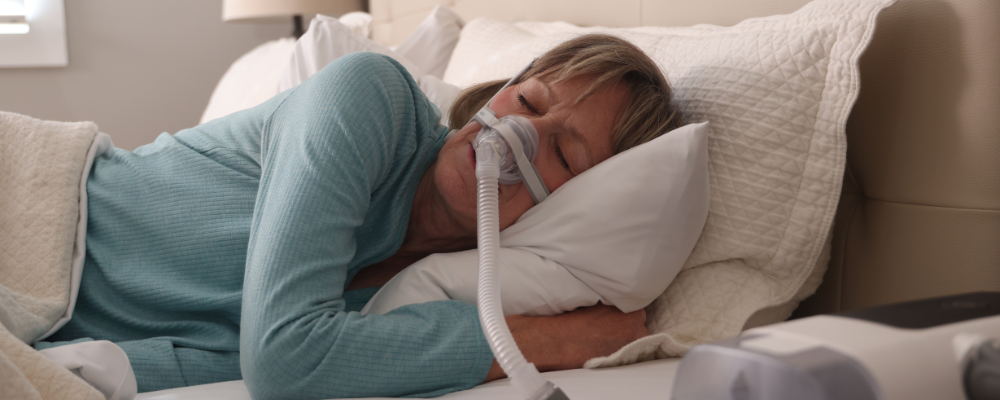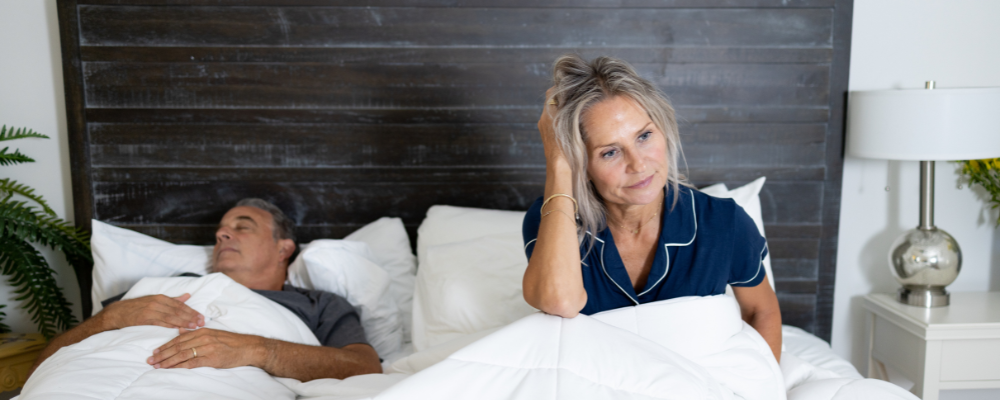Maybe you’re a new CPAP user, or maybe you’ve never even heard of this life-saving sleep apnea treatment. Either way, you’re in the right place! In today’s blog, Aeroflow Sleep’s Science Advisor, Dr. Carleara Weiss joins us, giving a basic overview of all things CPAP.
What Does The Acronym "CPAP" Stand For?
The acronym “CPAP” stands for continuous positive airway pressure. A CPAP machine is a medical device that provides a continuous flow of air pressure while an individual is sleeping. More specifically, CPAP devices are designed to effectively treat a common sleep disorder called sleep apnea.
Is CPAP Oxygen Or Just Air?
A CPAP device simply pressurizes air; it does not generate oxygen. To further clarify, an oxygen concentrator is a medical device that generates pure oxygen (O2), and it is an entirely different medical device from a CPAP. Remember, CPAP only works as a treatment for sleep apnea; it cannot be used to treat disorders that require oxygen therapy, like COPD or emphysema.
How Does A CPAP Machine Help Treat Sleep Apnea?
Before outlining how CPAP treatment works, let’s first define sleep apnea; sleep apnea is a sleep disorder that impacts your breathing while sleeping. There are 3 types of sleep apnea: obstructive sleep apnea (OSA), central sleep apnea (CSA), and mixed sleep apnea.
Obstructive sleep apnea (OSA) occurs when there is a physical blockage that prevents an individual from breathing while sleeping. OSA can be treated with a CPAP machine and is the most common form of sleep apnea.
Central sleep apnea (CSA) occurs when the brain does not send the body signals to breathe while sleeping. A BiPAP machine may be preferrable.
Mixed sleep apnea (or complex sleep apnea) is a combination of obstructive and central sleep apnea. It may or may not be treated with a CPAP machine.
Now that you have a general understanding of sleep apnea, here’s a brief overview of how CPAP therapy works. CPAP therapy works by delivering pressurized air from a CPAP machine to a CPAP mask. The pressurized air helps keep your upper airway open while sleeping. This ensures that your body stays breathing while sleeping in order to effectively treat your sleep apnea.
What Is The Downside To CPAP?
For first-time CPAP users, there is often an adjustment period, which can be a downside. According to The Sleep Foundation, some common initial side effects include dry mouth, nasal congestion, and skin irritation. However, if you experience any of these symptoms, let your provider know as soon as possible. For example, if you are experiencing dry mouth and nasal congestion, your provider may advise adjusting your humidification settings or trying a CPAP machine with a built-in humidifier.
On the other hand, if you experience any discomfort or skin irritation, that may be a sign that you need to try a different mask. There are several different types of masks; including full face masks (which cover both your nose and mouth) and nasal pillow/nasal masks (which cover just your nose). Ultimately, if you are having a difficult time first adjusting to CPAP, reach out to your provider for help as soon as possible!
What Is The Difference Between CPAP, BiPAP & APAP?
When it comes to CPAP therapy, you also have options! In addition to CPAP, bilevel positive airway pressure (BiPAP or BPAP) and automatic positive airway pressure (APAP) offer other therapy options. The main difference between these different types of PAP (positive airway pressure) therapy has to do with the pressure settings.
As we discussed earlier, CPAP offers one fixed pressure setting throughout the night. However, BiPAP machines offer two different pressure settings. Typically, a higher pressure is used on inhalation and a lower pressure is used for exhalation.
APAP machines, on the other hand, auto-adjust your pressure levels as needed. While these machines are designed to maximize comfort, we recommend reaching out to your healthcare provider for help with determining which machine will best treat your sleep apnea.
If you regularly snore, experience daytime sleepiness and/or experience poor sleep quality, it is a good idea to reach out to your doctor about CPAP therapy. If your doctor suspects that you have a sleep disorder, they will likely refer you to a sleep medicine professional for a sleep study. Following your sleep study, if you have been diagnosed with sleep apnea, your doctor will prescribe you some form of sleep apnea treatment. CPAP is often considered the best first treatment option.
Remember, better sleep leads to better quality of life! If you are interested in receiving PAP supplies through your insurance, Aeroflow Sleep can help! Start by taking 5 to 7 minutes to fill out our online qualify form today.
References
Summer, Jay. “Common Side Effects of CPAP.” Edited by Abhinav Singh, Sleep Foundation, 27 Feb. 2024, www.sleepfoundation.org/cpap/cpap-side-effects.
Susheel P. Patil, MD, PhD, Indu A. Ayappa, PhD, Sean M. Caples, DO, R. John Kimoff, MD, Sanjay R. Patel, MD, and Christopher G. Harrod, MS. Treatment of Adult Obstructive Sleep Apnea with Positive Airway Pressure: An American Academy of Sleep Medicine Clinical Practice Guideline. 2019. https://doi.org/10.5664/jcsm.7640.

